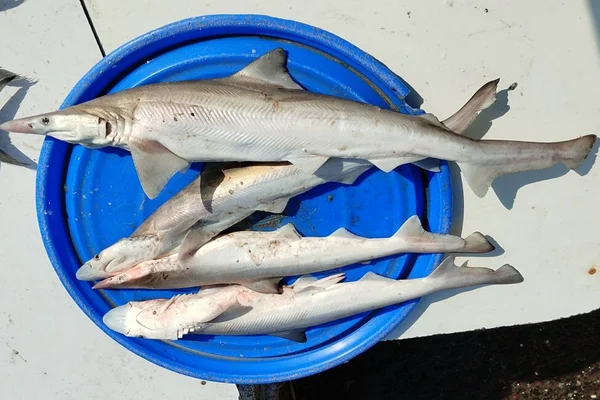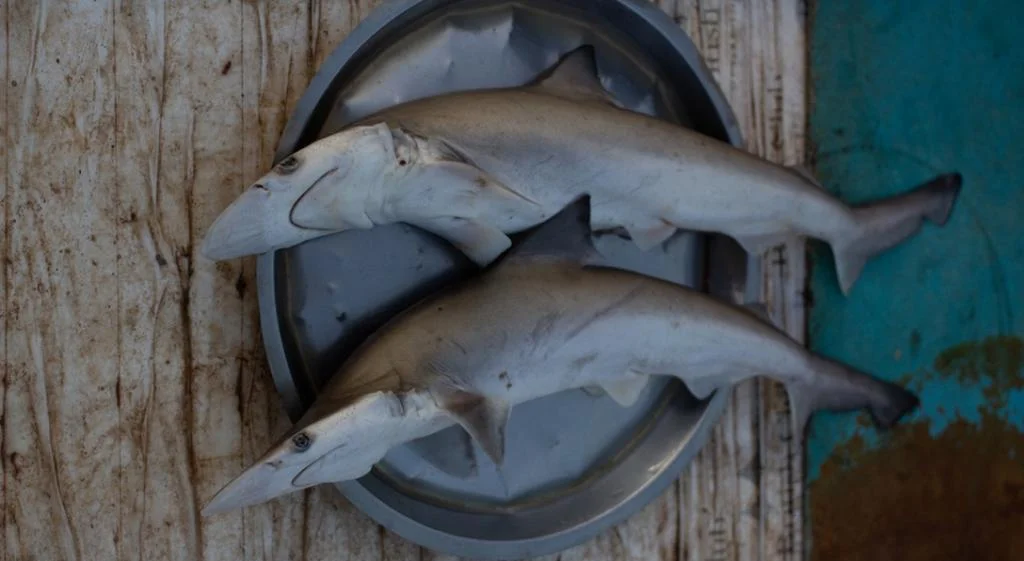A recent study revealed the shifting patterns in the consumption of elasmobranch (shark and ray) meat in India.
Key Findings of the study:
- Traditionally part of tribal and coastal diets, this delicacy is gaining popularity among new demographics, including foreign tourists and the Indian middle and upper classes.
- This emerging trend poses a threat to the sustainability of shark species in a nation already ranked as the world’s third-largest exploiter of sharks and rays.
- The study identified 2,649 seafood restaurants across 10 coastal states and Union territories in India, with online menus.
- 292 of these establishments featured shark meat on their menus, indicating a growing demand.
- Goa led with 35.8% of restaurants offering elasmobranch meat, followed by Tamil Nadu (34.6%) and Maharashtra (4.6%).
- Foreign tourists, particularly from Russia, the United Kingdom, Germany, and Israel, contribute significantly to this demand, preferring specific shark dishes.
Shifting Dynamics and Threats:
- Approximately 251.6 tonnes of shark meat are sold annually in Indian restaurants, equivalent to 83,866 sharks weighing 3 kg each (9.8% of India’s annual elasmobranch).
- Historically consumed by coastal and tribal communities, shark and ray meat has experienced increased demand since the 1960s and 1970s.
- Threatened species such as the Spadenose shark, Milk shark, Gray sharpnose shark, and Reticulate whipray are among those consumed.
- This indicates a potential threat to over a third of global shark and ray species.
- Overfishing is driven by human consumption endangering more than 95% of these threatened species.
- The study proposed measures like substituting alternative seafood in regional cuisines, reducing bycatch, raising prices, and launching awareness campaigns for seafood consumers.
Key threatened Elasmobranch:
- Spadenose shark: It is a small, stocky shark with a broad head and a flattened, trowel-shaped snout and found in the tropical Indian and western Pacific Oceans.
- Gray sharp nose shark: It is a small, ground shark that lives in the tropical waters of the Indo-West Pacific Oceans and lives on continental and insular shelves.
- Milk shark: This small, slender shark has a long, narrow snout and big eyes, living in marine, freshwater, and brackish environments at depths of 1–200 meters.
- Reticulate whip ray (honeycomb stingray): This is a large, disc-shaped stingray with a long, slender tail found in the western Indian Ocean, including the Red Sea, Natal, and the Arabian Sea.
Ref: Source
| UPSC IAS Preparation Resources | |
| Current Affairs Analysis | Topperspedia |
| GS Shots | Simply Explained |
| Daily Flash Cards | Daily Quiz |



